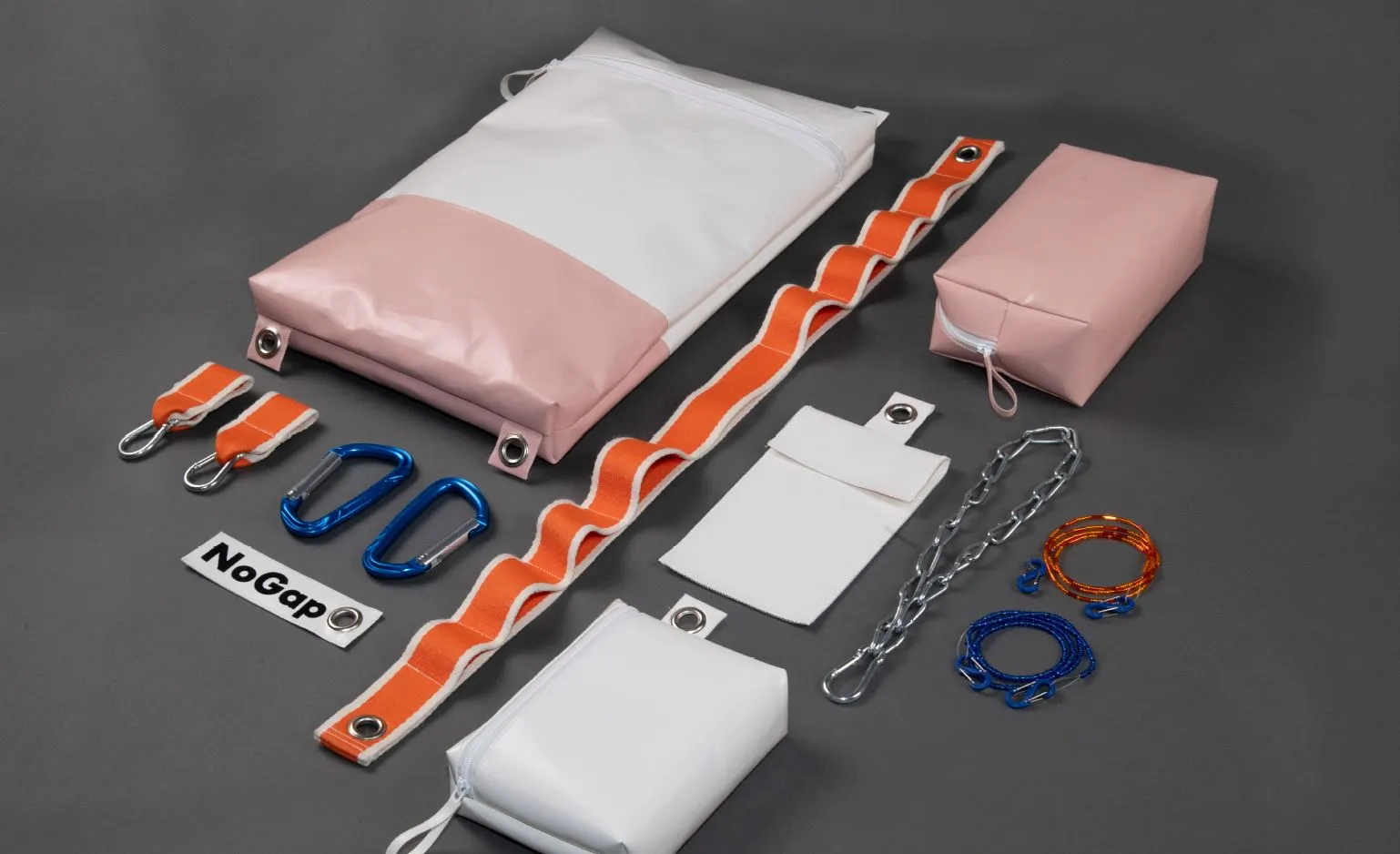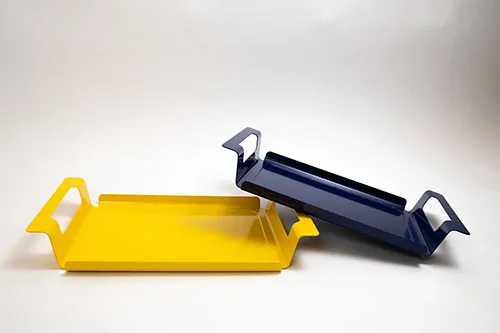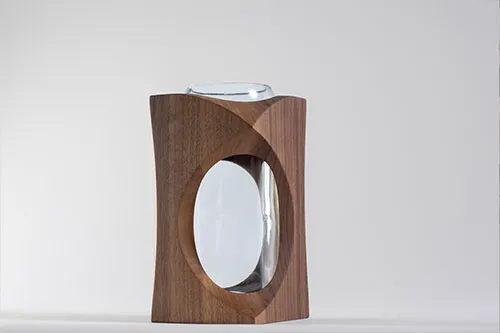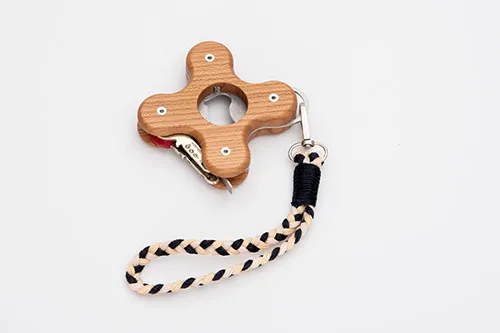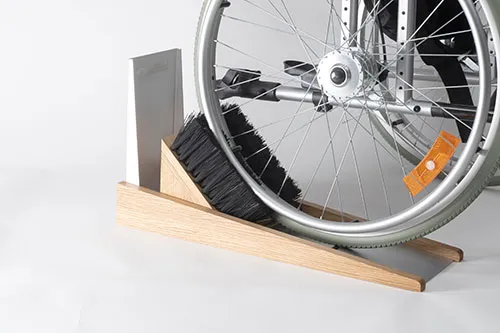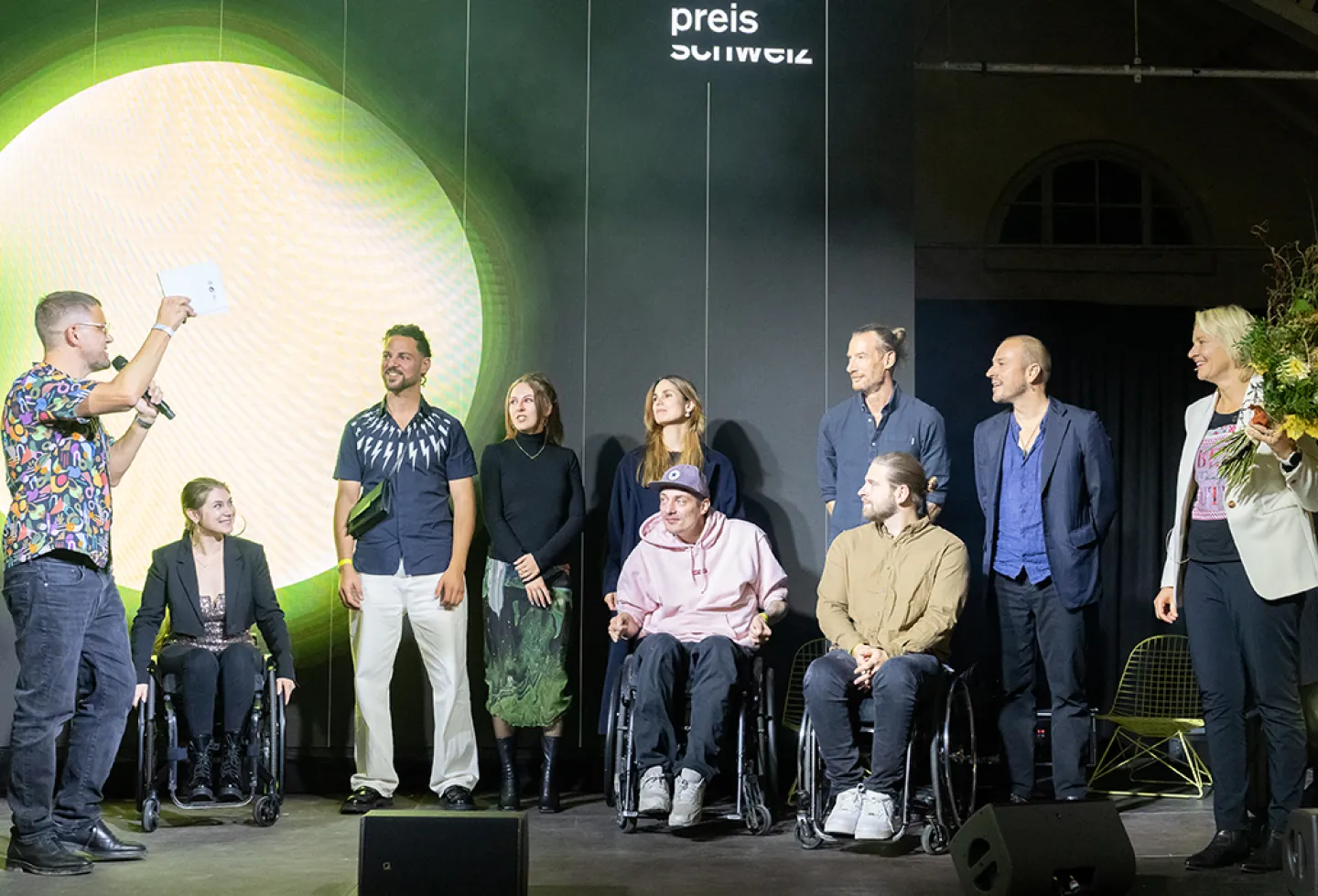
Design Prize Switzerland
Design Prize Switzerland – combining aesthetics and functionality
Uli Kössl* explains what the Design Prize Switzerland is all about, who is eligible to participate, and the important role played by the Swiss Paraplegic Foundation.
What is the Design Prize Switzerland?
It is the leading and most well-known award for creative minds in Switzerland in all areas of design. This includes graphic, fashion and inclusive design. The prize has been awarded for more than thirty years. This year, it is embarking on a new cooperation with an external partner, namely the Swiss Paraplegic Foundation. The newly created Inclusive Design category is exclusively for products that meet the requirements of the call for entries.
It is important that the term design is understood correctly. Design is not divorced from reality, expensive or elitist; if nothing else, design means solving a problem.
Who can take part?
Basically anyone who thinks innovatively and believes that they can make an interesting contribution in this area. So you do not have to have studied design. All that is important is that you have a specific, good, well-developed and comprehensible idea, and ideally also a prototype. If you are interested, fill out a form and explain why the product is so valuable and how it helps wheelchair users to lead a self-determined and independent life.
What does design mean?
There are two different types of design: aesthetic and functional. We want to have both. The new products should be as practical as possible, but also beautiful. There are often existing products that offer excellent functionality, but have a lot of catching up to do when it comes to aesthetics. People with spinal cord injuries appreciate beauty just as much as able-bodied people.
How will it be organised?
The Swiss Paraplegic Foundation is trying to ensure that as many specific ideas as possible are submitted in the initial phase. We approached all design schools in Switzerland, presented the project and asked if they were interested in participating. We were pleased with the feedback, and almost all schools are taking part.
In each case, a whole class comes to us in Nottwil and spends a day here. Peers guide them around the campus, talk to them and tell them about their day-to-day lives, including their problems. The students listen to them and, at the same time, the things that they are experiencing make them think. And suddenly they have an idea. They then set about putting it into practice at their school, produce a prototype or set out everything in detailed, comprehensible sketches. This will be followed by a presentation in Nottwil, which will be assessed by a panel of experts.
As a first step, a jury will examine the products and evaluate them according to various criteria: How useful are they? How functional? How beautiful? Afterwards, an international jury of experts will look at the best products. What’s more, the really good products are not only suitable for wheelchair users, but also for able-bodied people.
What do you want to achieve with the new prize category?
A quote from two-time Nobel Prize winner Linus Pauling comes to mind: “The best way to have a good idea is to have lots of ideas.” This means that we need to collect as many ideas as possible, because that increases the probability that there will be something that is really good and helpful – and that has a chance on the market. The submissions that we have received so far confirm this belief for me, as they include products that might actually help people with spinal cord injuries to lead a better life.
Why is it important for the Swiss Paraplegic Foundation to be involved in this area?
The SPF supports people with spinal cord injuries throughout their lives. It is important to us that things are as good as possible for people living with spinal cord injuries. Design plays an important role in inclusion, as we saw with our fashion project. However, design also has an impact on health and undoubtedly also on self-esteem. When someone in a wheelchair is asked about their amazing backpack, it makes them feel just as good as an able-bodied person who is complimented on their beautiful handbag.
What will the winner of the prize category receive?
We have not yet decided whether there will be any prize money. What is certain is that the winner will be able to present the winning product and business plan to the Innovation Board of the Swiss Paraplegic Foundation. If the Board is impressed, the implementation of the project will also be financed. We do not want to be left with plans and sketches that disappear into a drawer; we want to put them into practice. Otherwise, we will upset the participants.
Another new feature is that all submitted work will be shown to the Innovation Hub. This might identify things that could be useful for wheelchair users but were not quite aesthetically sophisticated enough to be considered for winning the Design Prize Switzerland. Lots of ideas could therefore develop into something concrete.
*Ulrich Kössl has been the Manager for Design and Agile Methods at the Swiss Paraplegic Centre Nottwil since 2020. Prior to that, he was CCO at de Sede AG and Global Head of Design at Kuhn Rikon. He headed the Design and Development department at WillisauGroup and has extensive experience as a coach for agile working methods such as Design Thinking or Lego Serious Play. Born in Regensburg, he has won several prestigious international design awards.
Projects
Werden Sie jetzt Mitglied und erhalten Sie im Ernstfall 250 000 Franken.

